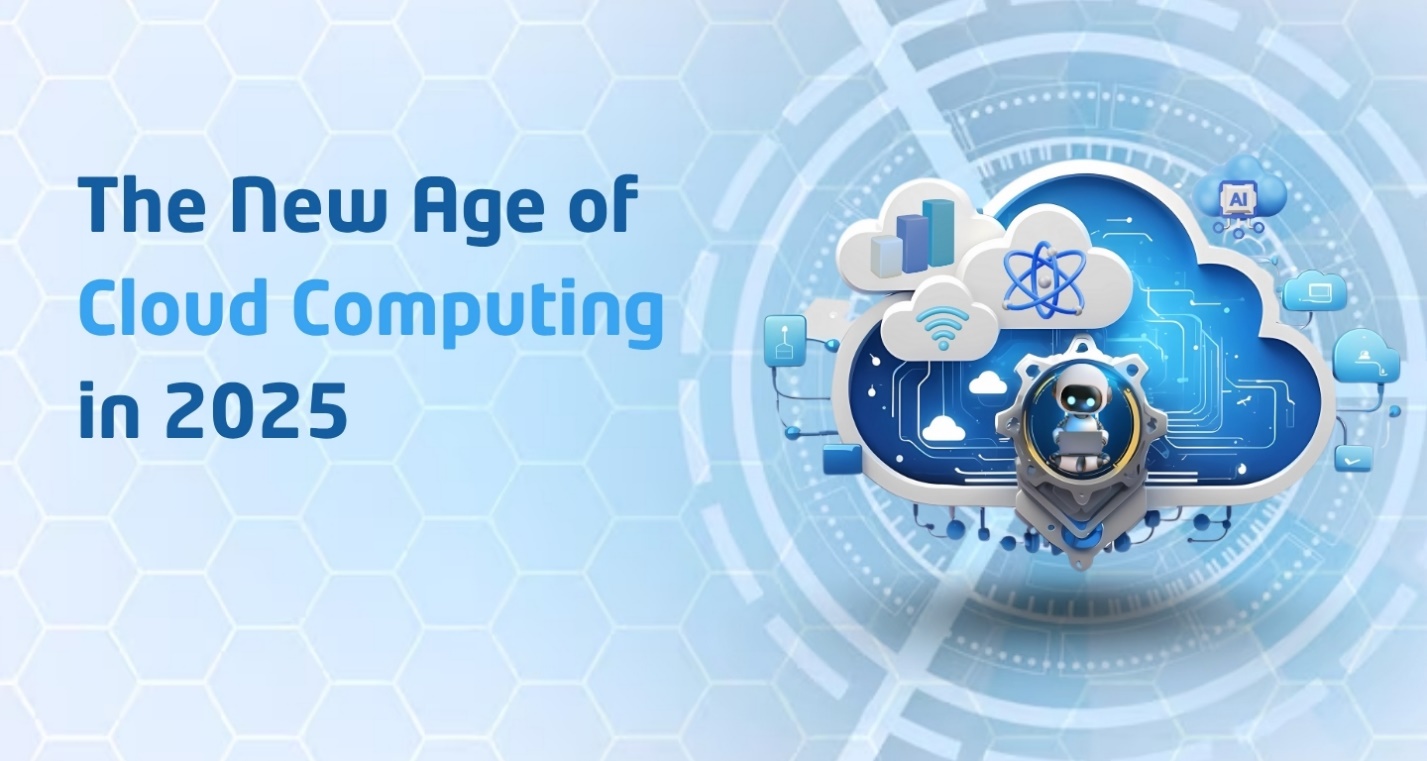The cloud computing landscape is evolving rapidly, reshaping how businesses manage, store, and analyze their data. As we step into 2025, new trends and technologies are pushing the boundaries of innovation, scalability, and performance. From intelligent automation to enhanced data strategies, here’s a deep dive into what’s new in cloud computing this year.
AI Integration Is No Longer Optional
Artificial Intelligence (AI) and Machine Learning (ML) have become integral components of today’s cloud computing services. In 2025, AI integration isn’t just about adding smart features—it’s about transforming core infrastructure. Cloud platforms now offer AI-as-a-Service (AIaaS), empowering organizations to build intelligent applications without managing underlying complexities.
Adaptive Machine Learning has also gained momentum. Unlike traditional ML models, adaptive systems continuously learn from new data, making cloud solutions more responsive and accurate over time.
Serverless Architectures for Agile Innovation
Serverless Computing continues to revolutionize the developer experience. In 2025, it will be more than a buzzword—it will be a business-critical architecture. With serverless platforms, developers are free to concentrate on coding, while the cloud provider takes care of infrastructure setup, automatic scaling, and ongoing maintenance.
The growth of Function-as-a-Service (FaaS) and event-driven computing models offers unmatched agility, helping startups and enterprises build and deploy apps faster than ever before.
The Rise of Edge Computing
With the rapid growth of IoT devices and real-time applications, edge computing is becoming a major trend in 2025. Instead of routing all data to centralized data centers, edge computing allows for processing closer to the source, significantly reducing latency and improving user experience.
From smart cities to autonomous vehicles, edge computing is a foundational component of modern cloud ecosystems, enabling faster decision-making and efficient bandwidth usage.
Multi-Cloud and Hybrid Cloud Strategies Gain Ground
In 2025, an increasing number of organizations are turning to multi-cloud and hybrid cloud approaches to boost system resilience, reduce dependence on a single provider, and achieve greater cost efficiency. Enterprises are strategically combining public and private cloud environments to meet regulatory requirements and ensure data security.
The emergence of cloud orchestration tools is making it easier to manage resources across multiple platforms, providing a seamless and unified cloud experience.
Quantum Computing Meets the Cloud
Although still in its early stages, quantum computing is becoming increasingly accessible via cloud-based platforms. In 2025, several leading providers are offering Quantum-as-a-Service (QaaS), allowing researchers and developers to experiment with quantum algorithms without needing physical quantum machines.
This breakthrough promises to accelerate research in drug discovery, logistics optimization, and financial modeling—fields that require complex computations beyond the capabilities of classical computers.
Enhanced Data Management Capabilities
Effective data management is at the heart of every successful cloud strategy. In 2025, cloud providers are investing heavily in intelligent data services that offer automation, real-time analytics, and secure storage solutions.
With increasing data volumes and privacy regulations, businesses are looking for robust tools to govern, classify, and protect their data across cloud environments. AI-driven data cataloging, automated backup solutions, and enhanced compliance monitoring are expected to take center stage.
Sustainability through Green Cloud Solutions
Sustainability is no longer a secondary concern. In 2025, cloud computing services prioritize eco-friendly practices by adopting green data centers, optimizing energy consumption, and leveraging renewable energy sources.
Businesses are now evaluating their cloud providers based on carbon footprint metrics, pushing the industry toward more responsible and sustainable operations.
Improved Security and Compliance in the Cloud
With the surge in cloud adoption comes a heightened focus on cybersecurity. Modern cloud computing services in 2025 offer integrated threat detection, comprehensive end-to-end encryption, and adopt zero-trust security frameworks to enhance data protection.
Additionally, compliance automation tools help organizations meet global data protection standards, making it easier to operate across borders while staying secure.
Evolution of Cloud-Based Enterprise Software Solutions
Cloud-based enterprise software solutions are becoming more specialized and industry-specific. Whether it’s healthcare, finance, or retail, cloud vendors are now offering tailored SaaS platforms to meet unique operational needs.
These solutions are increasingly integrating with AI and analytics tools, enabling better customer insights, predictive forecasting, and smoother workflow automation.
Real-Time Collaboration and Remote Workforce Optimization
Cloud innovations have enabled global teams to work together in real time with reduced latency and improved efficiency. In 2025, cloud platforms are offering integrated communication, project management, and virtual desktop solutions to support distributed workforces.
The fusion of AI integration with communication tools has further enhanced employee productivity, automating tasks like scheduling, reporting, and language translation.
Final Thoughts
In 2025, cloud computing services has become more intelligent, efficient, and responsive than ever before. As AI and machine learning, edge computing, serverless architectures, and quantum computing reshape the digital ecosystem, businesses must stay proactive and informed. Embracing these advancements isn’t just about keeping up—it’s about staying ahead.
The cloud computing revolution in 2025 presents limitless opportunities, but also unique challenges. Whether you’re looking to modernize your infrastructure, adopt serverless architectures, or implement advanced AI solutions, expert guidance can make all the difference. Talk to our experts to discover how your organization can leverage the latest cloud technologies for sustainable growth, innovation, and operational efficiency.

